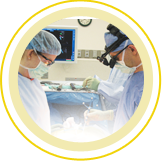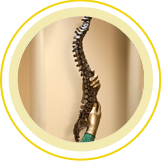Back pain is one of the most common complaints, and the causes can range from muscle strain to more complex conditions like scoliosis. While scoliosis is often associated with children or teenagers, adults can also develop this condition, leading to persistent back pain and other troubling symptoms. So, could your back pain be related to adult scoliosis?
Understanding Adult Scoliosis: A Common Yet Overlooked Condition
Scoliosis is a condition where the spine curves abnormally to the side, creating a “C” or “S” shape rather than maintaining a straight line. While this condition is often diagnosed in childhood or adolescence, adults can also experience scoliosis, even if they were not diagnosed as children. Adult scoliosis can occur in those whose childhood scoliosis was not treated or corrected, or it can develop later in life as part of the aging process.
While this condition is often diagnosed in childhood or adolescence, adults can also experience scoliosis, even if they were not diagnosed as children. Adult scoliosis can occur in those whose childhood scoliosis was not treated or corrected, or it can develop later in life as part of the aging process.
In fact, adult scoliosis is more common than many realize, with approximately 6 million adults in the U.S. living with this condition, though the number of undiagnosed cases is likely even higher. The majority of those affected are in their 60s and 70s, making it an increasingly prevalent issue as life expectancy and activity levels continue to rise.
Types of Adult Scoliosis: Idiopathic vs. Degenerative
There are two primary types of adult scoliosis: idiopathic and degenerative. Both can lead to discomfort, but their causes and progression are different.
- Idiopathic Adult Scoliosis: This type refers to scoliosis that continues into adulthood after it initially developed during childhood or adolescence. Although the exact cause of idiopathic scoliosis is unknown, it is believed to be related to genetic factors or abnormalities in the spine’s growth patterns.
- Degenerative Adult Scoliosis: This form of scoliosis develops as a result of age-related wear and tear on the spine’s joints and discs. Over time, the deterioration of the spinal discs causes the vertebrae to shift, leading to an abnormal curvature of the spine. Degenerative scoliosis is more commonly seen in older adults, particularly those in their 60s and beyond, as the natural aging process accelerates wear on the spine.
What Causes Adult Scoliosis?
The primary cause of degenerative scoliosis is the gradual breakdown of the spinal discs, which act as cushions between the vertebrae. This breakdown can lead to misalignments, which can cause the spine to curve more significantly over time. This type of scoliosis is often worsened by lifestyle factors like poor posture, obesity, and high-impact activities that place extra stress on the spine.
Additionally, adults who are active in physical activities such as walking, swimming, or golfing may experience an increased risk of degenerative scoliosis due to the cumulative effect of years of movement and strain on the spine.
Symptoms of Adult Scoliosis: How to Recognize It
The symptoms of adult scoliosis can differentiate depending on how severe the curvature is and the underlying cause.
Common symptoms of this condition include:
- Back Pain: Often the most noticeable symptom, back pain associated with scoliosis typically affects the lower spine or lumbar region. Pain can range from mild discomfort to more severe, chronic pain.
- Postural Changes: Individuals with scoliosis may notice an inability to stand up straight, as the curvature of the spine forces the body to compensate, leading to a tilted or uneven posture.
- Leg Pain and Numbness: Scoliosis can sometimes cause nerve compression, leading to symptoms such as leg pain, numbness, or weakness. These symptoms often occur in the hips, thighs, or legs, and may be accompanied by tingling sensations.
- Uneven Pelvis and Hips: As the spine shifts, the alignment of the pelvis and hips can become uneven. This can lead to an imbalanced gait or difficulty with walking.
- Loss of Height: Over time, degenerative scoliosis can cause a noticeable reduction in height, as the spine becomes increasingly misaligned.
Treatment Options for Adult Scoliosis
For many adults with scoliosis, treatment is not necessary unless the symptoms cause significant pain or interfere with daily activities. In cases of degenerative scoliosis, the main goal of treatment is to manage pain and improve functionality, rather than trying to straighten the spine.
Treatment options may include:
- Physical Therapy: Physical therapy focuses on strengthening the muscles that support the spine and improving posture. Specific exercises can help reduce stress on the spine, especially when lifting or bending.
- Steroid Injections: For more severe pain, steroid injections may be used to reduce inflammation and improve mobility in the affected area.
- Surgical Options: In rare cases where pain is unmanageable or if there are significant functional impairments, surgery may be considered. Surgical procedures may involve spinal fusion or the installation of metal rods to correct severe curvature.
Seek Evaluation for Adult Scoliosis in Greensboro or High Point, NC
If you had scoliosis as a child and are now experiencing back pain, or if you suspect that degenerative scoliosis may be the cause of your discomfort, it’s essential to consult with a spine specialist. Early diagnosis and intervention can help manage symptoms and improve your quality of life. Contact Spine & Scoliosis Specialists at 336.333.6306 today to schedule a consultation and discuss treatment options.



